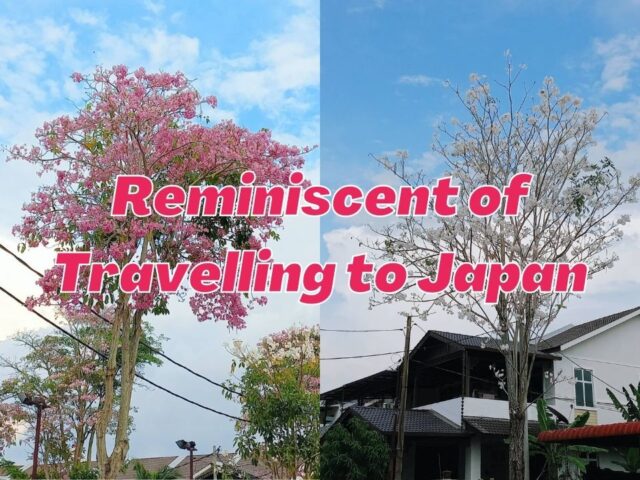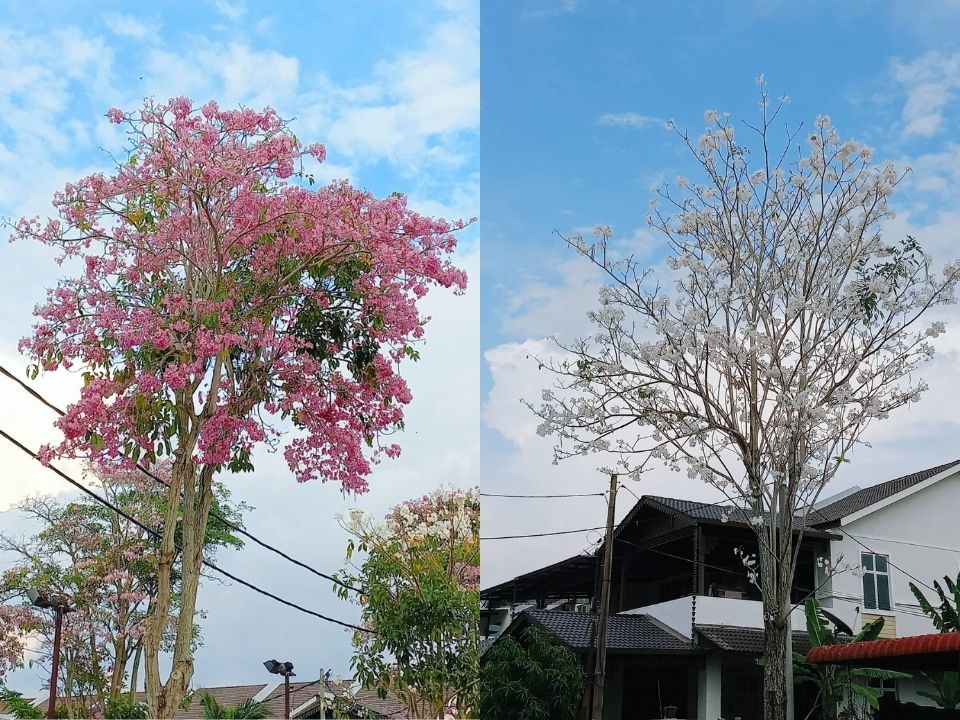
Have you ever noticed any tecoma trees while travelling to your destinations or around your residential area in Malaysia?
Try looking out your car window or walking around your residential area rather than staring at phone screens to capture the pink and white tecoma flowers blanketing the land around you!
Reminiscent of Travelling to Japan
Malaysians typically look forward to visiting Japan starting from late March to early May to wear the Japanese traditional costume, kimono, and take stunning images of flowering cherry blossoms, also known as sakura.
Due to the Covid-19 pandemic, opportunities to cross Japan’s borders during the sakura blooming season were lost for three consecutive years. However, it appears that we won’t have to travel far or go through many procedures to have a look at that beautiful scenery.
Tecoma in Full Bloom Across States of Malaysia
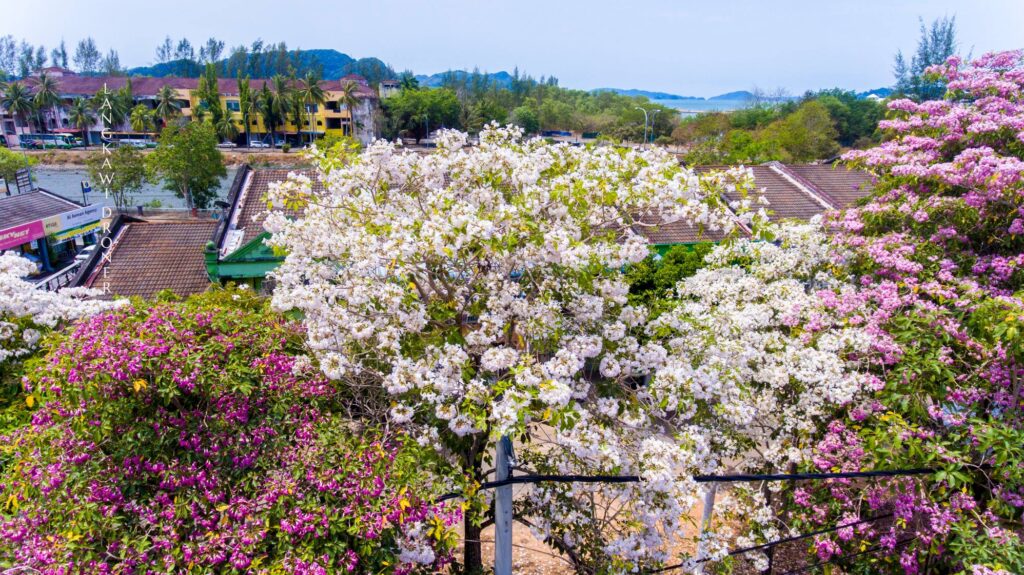
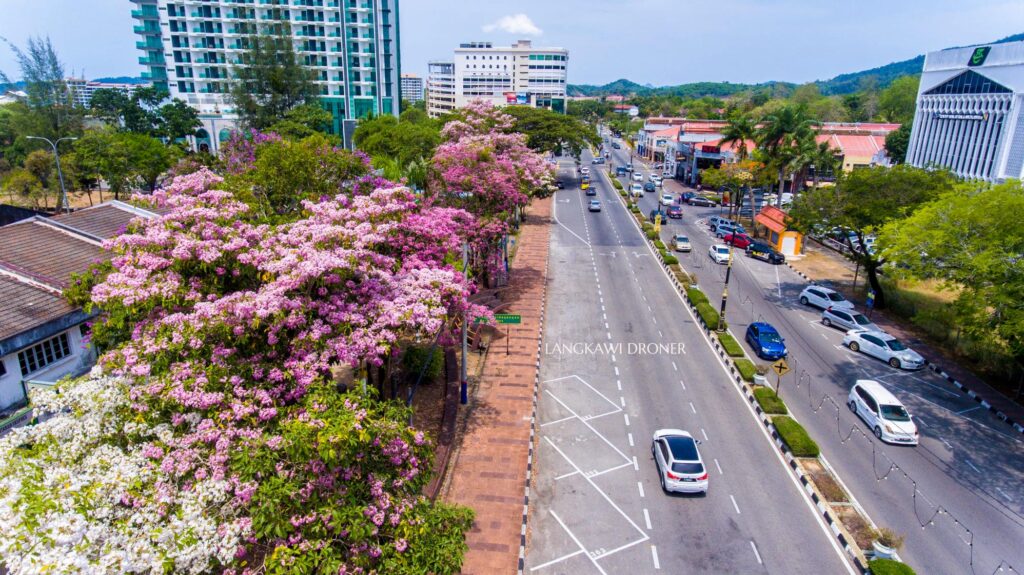
Just as the dreamy scenes in Korean dramas, tecoma trees can be seen along the streets in Penang, Perak, Kedah, Johor and other places in Malaysia.
In previous years, tecoma flowers bloom from February to April, which is also the driest season, but this year they blossom slightly later, in May and June.
The colour of tecoma flowers have gradually transformed from light pink to delicate pastel shades of pink and purple, don’t miss your chance to feel that lovely atmosphere.
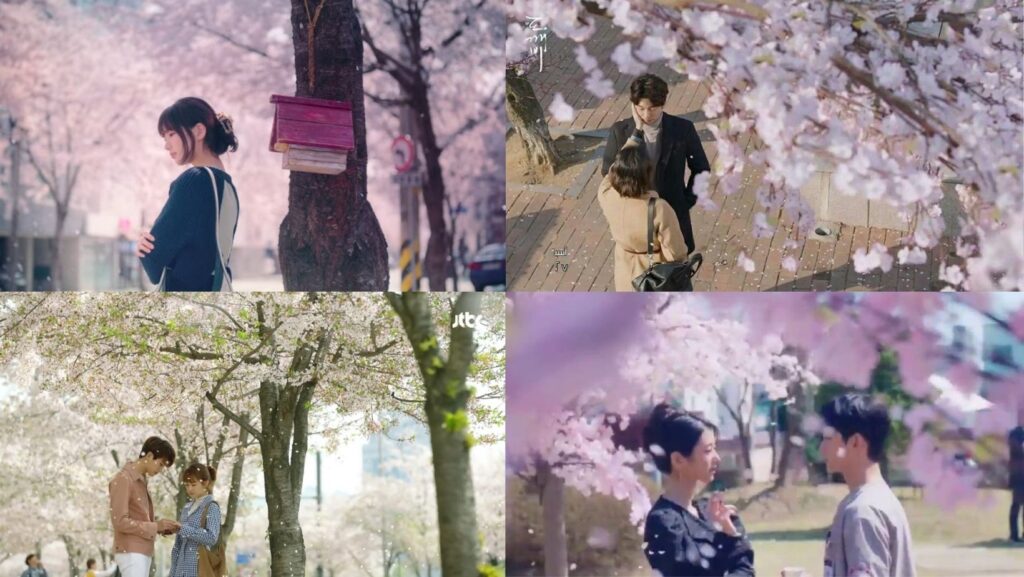
Different Names of Tecoma
Apart from the scientific name tecoma, Malaysians also refer to it as ‘tissue paper trees’, pokok bunga kertas tisu in Malay, or ‘trumpet trees’, the former denoting its serviette-like appearance and frail nature, unable to withstand blustering wind and rain.
Tecoma is a subfamily of 14 shrubs or small trees in the Bignoniaceae, trumpet vine family. Other names of tecoma trees include tabebuia rosea, pink poui, and rosy trumpet tree. In Malay, it is usually spelled as tekoma. The trees of tecoma can grow up to 7-storey height, that is 30 metres.
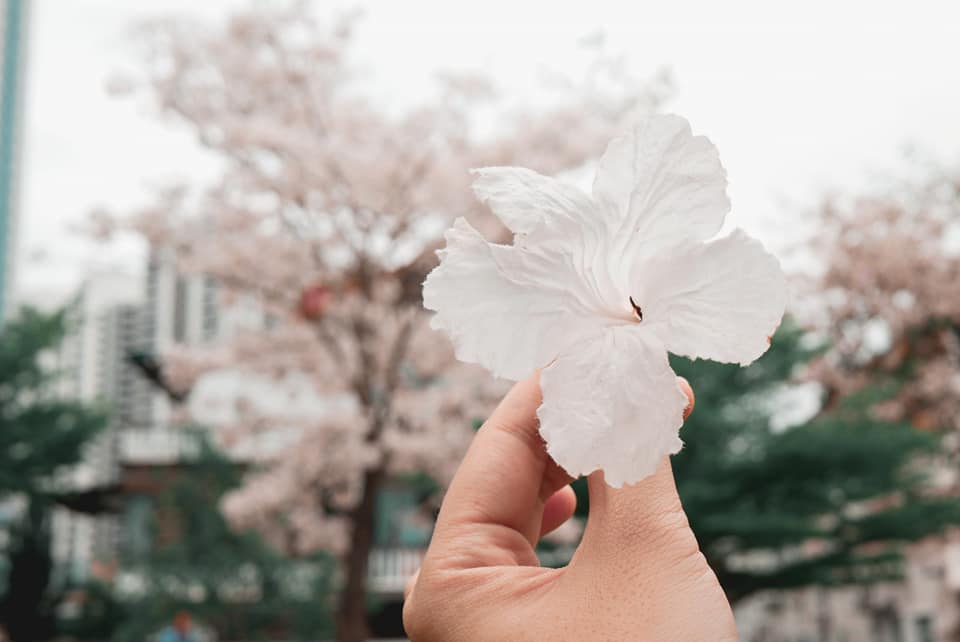

Is Japan Open for Travel Now?
With the gradual ease of its borders, Japan has reopened to international tourists and started accepting applications. Relatives of Japanese nationals, permanent residents and long-term residents can enter while foreign business travellers and students can enter Japan provided they have the proper visa.
Tourists from certain countries can enter Japan on package tours but must apply for a visa in advance. Free, independent tourists are not yet allowed but it is expected this will happen in the early fall.
You could visit the Japan Ministry of Foreign Affairs site (MOFA) for the latest details.
Interested in photography? Check out Best Spots To Catch For Sunset In KL!




